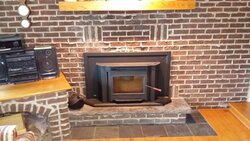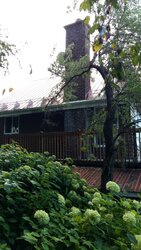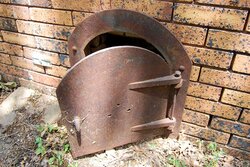We have an outside brick chimney that is maybe 50ft tall, possibly longer.
Every startup it blows all the smoke back into the room for around 1 min until the chimney is warm.
I have tried priming the flue, warning the flue with candles, lighting gel, upside down fires bit nothing prevents it at the beginning.
The place is near a river and hill at the back so the draw must change in winter.
Is there anything I can do?
Chimney fans seem very expensive.
Every startup it blows all the smoke back into the room for around 1 min until the chimney is warm.
I have tried priming the flue, warning the flue with candles, lighting gel, upside down fires bit nothing prevents it at the beginning.
The place is near a river and hill at the back so the draw must change in winter.
Is there anything I can do?
Chimney fans seem very expensive.






 The fan like you were looking at seems to be a catch for creosote if you are not running the stove well and have good wood.
The fan like you were looking at seems to be a catch for creosote if you are not running the stove well and have good wood.